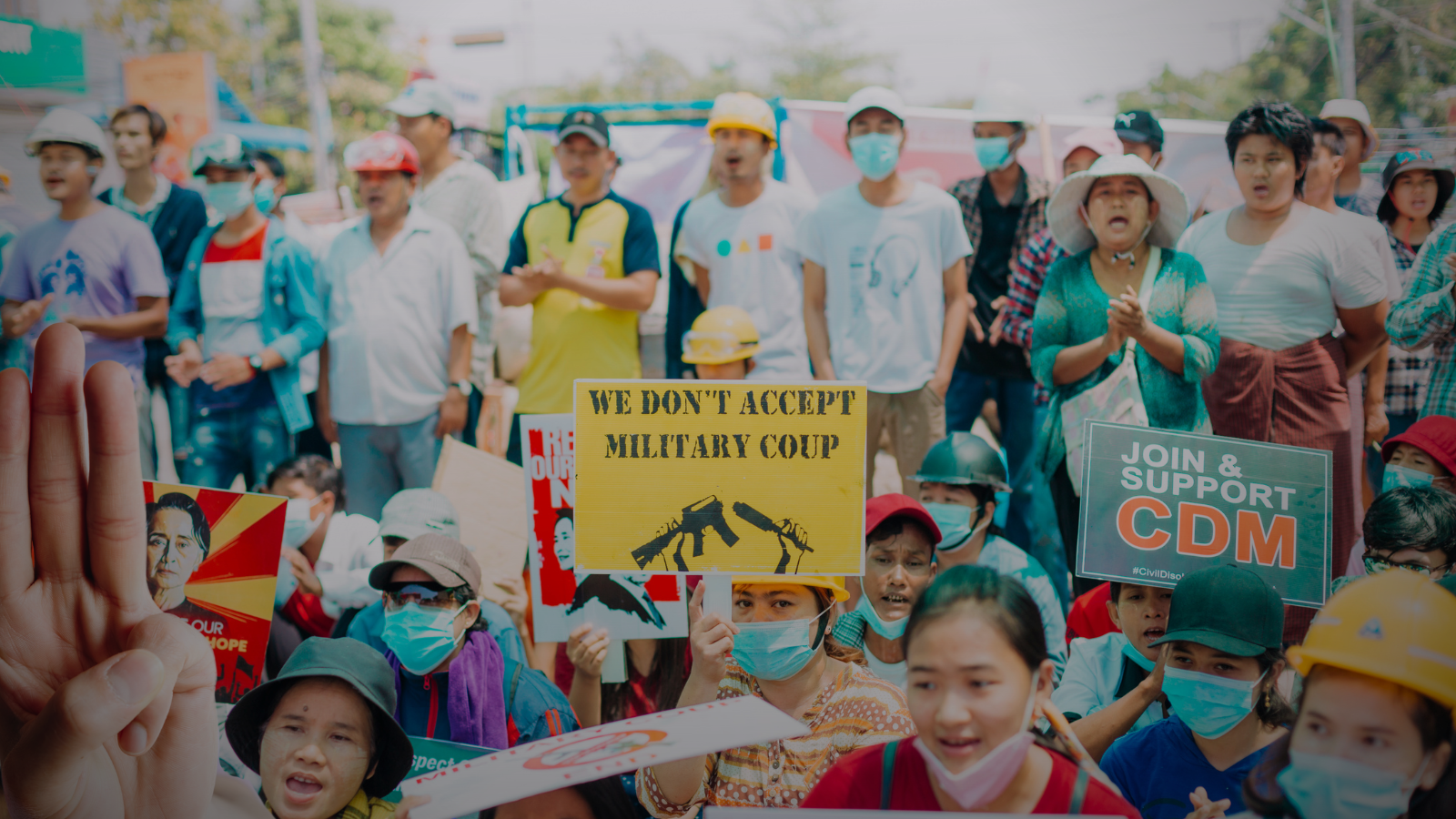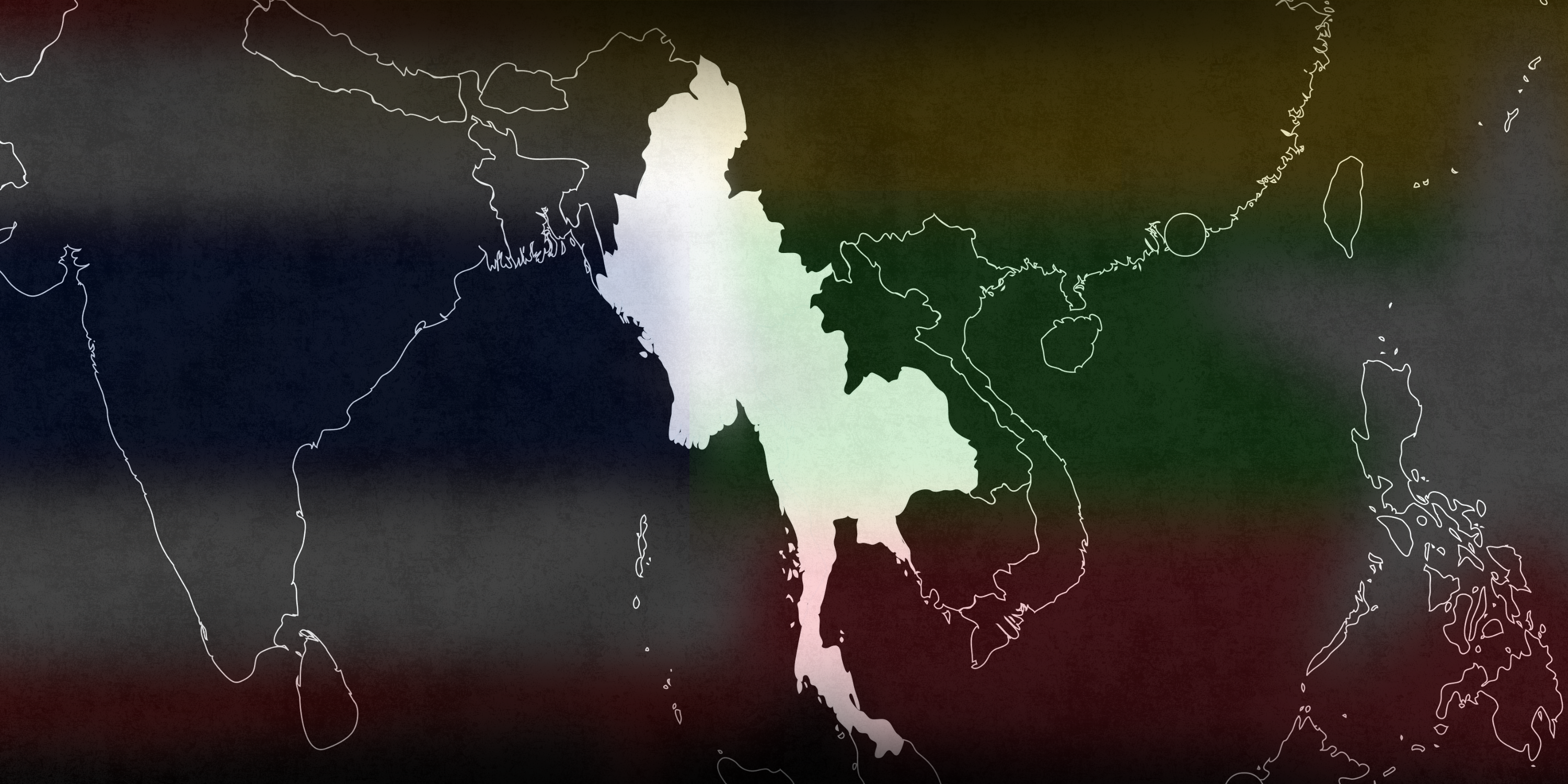While the Myanmar military retains control over major cities like Yangon, Mandalay, and Naypyidaw, its authority in Myanmar’s peripheral territories, especially in the north, is questionable at best. Years following the failed military coup, there emerges hope for the democratic resistance. By the conclusion of 2023 and the onset of 2024, Myanmar reached a turning point, witnessing notable victories by the resistance movement, particularly on the battlefield. For the first time since the coup, there’s a mounting likelihood that the revolutionary movement could overcome the military dictatorship.
Three years after the coup, Myanmar faces a severe humanitarian crisis, with countless people displaced and thousands losing their lives. The military’s actions have led to widespread suffering, with numerous individuals imprisoned and families torn apart. While the struggle in Myanmar is tragic, it also holds inspiration as the nation – previously deeply divided among various ethnic groups – has unified against the military, which seized power illegally on February 1, 2021. Likely driven by a combination of the military’s significant electoral defeat in the 2020 elections (in the form of a party close to the military, formed by former generals) and personal aspirations of the Commander-in-Chief, the military arrested most of the civilian leadership in the country and halted all democratic processes. Initially facing daunting odds, the people of Myanmar have persisted, and now, years later, we witness a gradual shift in the balance of power in their favour.
In the aftermath of the coup, the prospect of defeating the junta seemed bleak, with the military prepared to violently suppress initially non-violent protests, which eventually escalated into armed defense. For the first two years, the resistance movement struggled to survive, as the military had a significant advantage over them. The struggle eventually reached a tipping point in the third year where the military could not crush the resistance, yet the resistance couldn’t overthrow the military. By the end of the year 2023, a significant shift occurred in this situation. Operation 1027, named after its start date on October 27, 2023, marked a pivotal moment, and for the first time, it seems as though the revolutionary forces may eventually achieve victory.
However, the ultimate success of the resistance movement against the junta hinges on various factors, internal and external ones. Crucial external factors include the actions of the country’s neighbours, notably China, which has long been deeply involved in Myanmar’s affairs and played a pivotal role also in the above-mentioned Operation 1027.
China essentially gave the green light to the operation as it offered a solution to a longstanding issue it needed to solve. For months, the Chinese central government had urged the Myanmar military junta to clamp down on cross-border cyber scam syndicates, mainly run by Chinese criminals from compounds on the Myanmar side of the border, under the protection of local warlords. Despite China’s appeals, the junta did not respond. Instead, a different actor emerged and provided the long sought-after solution. In October 2023, the Three Brotherhood Alliance, consisting of three ethnic armed organisations joined by the people’s defense forces (armed units formed post-coup to fight the military regime and recognised by the National Unity Government, the parallel government constituted by representatives elected in the 2020 elections), launched an operation with a dual objective: to eliminate the scam syndicates operating in the region and to confront and to defeat the military dictatorship. For China, in the short term, prioritising the crackdown on scam centers overshadowed peace efforts along the border. Publicly, China advocated for de-escalating the conflict.
The ensuing battles resulted in the liberation of numerous compounds, with enslaved individuals (predominantly Chinese nationals); and led to unprecedented battlefield losses for the Myanmar military, highlighting the effectiveness and impact of the operation. Operation 1027, which is still ongoing, has emerged as the most significant threat to the military regime since the coup. The alliance has successfully blocked the junta’s access to the northern part of Shan State, seized key cities and towns in the region, and control of the Myanmar-China border, thereby disrupting the lucrative border trade (which previously funneled cash into the junta’s hands). Throughout these developments, China mediated talks between the military and the alliance, primarily aiming to prevent prolonged disruptions of border trade. The latest round of talks occurred in early March in the Chinese city of Kunming. The ceasefires negotiated thus far have been tenuous, with several instances of breakdowns.
Operation 1027 was made possible by the broader resistance movement in Myanmar, as the junta had faced a national uprising in numerous parts of the country. This further strained the junta’s already thinning forces. In turn, Operation 1027 not only capitalised on this weakening of the junta but also significantly bolstered the revolutionary forces in other parts of Myanmar. The revolutionary forces in these other areas intensified their efforts and began to occupy military bases. Consequently, the army suffered losses as several bases fell, and many soldiers were imprisoned.
As fierce battles between the military and the resistance movement persist, one thing is certain: there’s no turning back. Currently, everything in Myanmar revolves around the ousting of the oppressive junta and, on a broader scale, eradicating the military’s influence from the country’s political landscape. A return to a compromise scenario resembling the hybrid regime of the 2010s (with the military wielding significant political power alongside the civilian government), is not a viable solution. While the people of Myanmar believe victory is within reach, it remains uncertain how long this process will take – real change in Myanmar could be years away. Nonetheless, with the recent developments, we can now view this situation through a lens of hope.
The article was originally published by Generation Now Asia.







